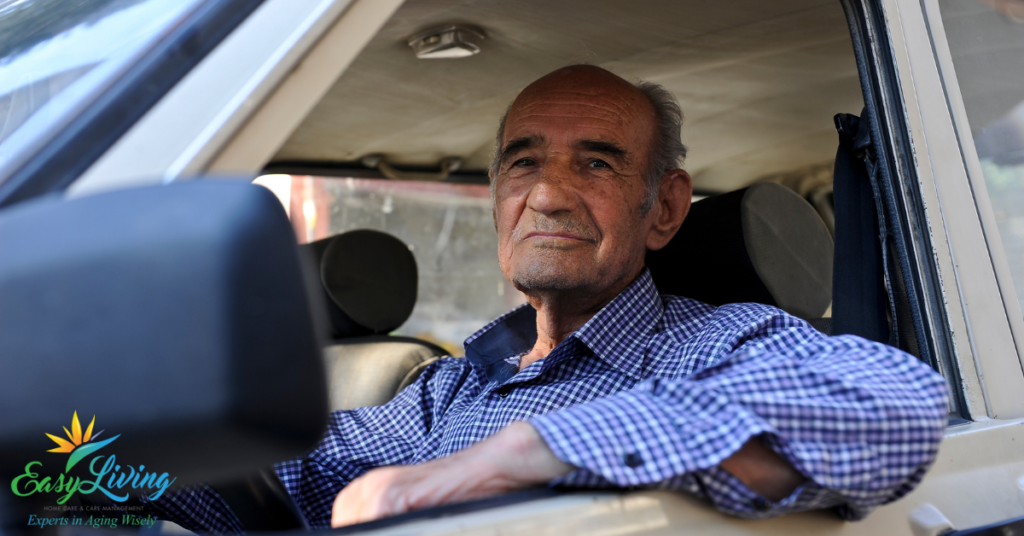What Happens After He Gives Up the Car Keys? Senior Transportation Issues
Let’s assume you’ve already determined it’s time for your elder loved one to stop driving and they’ve given up the car keys (or are about to do so). Congratulations on getting through those tough conversations. However, that’s just the beginning of this journey. Your elderly parent still needs to get around. We’ll explain why making a post-driving plan is so important and how to do it.
If you’re not quite at that stage yet, be sure to check out:
Senior Drivers: When It’s Time to Stop Driving
Seven Ways Your Elderly Parent May Be Denying They Can’t Drive Anymore
{{cta(‘e677efef-83a2-466f-b0d5-d0db0a58fe8f’,’justifycenter’)}}
Our team has worked with many families to determine when it’s time to stop driving, facilitate the conversations, and map out a plan. Contact us to discuss your concerns.
The Negative Effects of Giving Up the Car Keys
A study in the Journal of Gerontology: Social Science showed elders who drive are three times as likely to visit friends and families and attend social outings. Seniors who give up driving participate in significantly fewer social activities and are twice as likely to be more socially isolated. Social isolation scores increased significantly when seniors stopped driving and persisted over a six-year period studied.
Unfortunately, social isolation has multiple spin-off effects on an elder’s mental–and physical–health. Research has linked social isolation and loneliness to higher risks for: high blood pressure, heart disease, obesity, a weakened immune system, anxiety, depression, cognitive decline, Alzheimer’s disease, and even death.
From a practical perspective, how will your elderly loved one get around, not only to social engagements but for errands and appointments? Elders who give up the car keys may neglect appointments, especially preventative healthcare which may not seem like a necessity. They’re more likely to eat junk food and frozen meals as it becomes harder to grocery shop and conveniently get what they need.
After the Car Keys: How to Make a Senior Transportation Plan That Works
The great news is you don’t have to figure this all out yourselves! It’s as simple as setting up a consultation with our senior transportation experts to create a plan for you.
Here’s how to create a senior transportation plan that will prevent isolation and keep the elder safe and happy:
1. Assess the senior transportation needs.
Where does Dad go on a regular basis? What appointments and errands does he typically need to drive to on a weekly basis? Can all his driving needs be scheduled or are there some impromptu outings? How far does he need to travel and does he need someone to wait for him?
This is the time to think beyond the essentials. If the senior transportation plan only accounts for required appointments and errands, your loved one might miss out on key social interactions. They might say no to invitations because of concerns about how to get there. Without the car keys, many seniors feel a loss of freedom. They can’t just take an outing on a whim or run out quickly for something they need. This is all part of assessing the needs of the individual, not just providing a couple of generic resources.
2. Identify resources to address the needs.
Too often, we see elders that give up the car keys and their local family members just say “let us know when you need a ride”. However, this is not sufficient as a senior transportation plan. Just put yourself in their shoes for a minute and imagine your only option being to call a relative for a ride. Here you are an adult who has gone where you want when you want for years. Now, you’re back to being treated like a kid who needs their family to take them everywhere.
Fortunately, senior transportation options (and general transportation options) abound. Examples include:
Senior Transportation through Community Services and Public Transportation
We cover some of these senior transportation options in our local St. Pete/Pinellas County area in this article. From senior services offering no-cost rides to medical appointments to discounted bus services and accessible transportation, these options may cover many senior transportation needs.
On-Demand Car Services
Services like Lyft and Uber offer on-demand rides with a few clicks in an app. They can be a good option for some seniors.
Of course, taxis were the original on-demand car service and may still be a good option for your loved one/in certain situations or areas. Some taxi companies will allow you to set up an account with them, so your loved one doesn’t have to worry about carrying cash. Taxi companies like this one in Pinellas County offer an array of services like the account we mentioned, an app for booking, advance scheduling, non-emergency medical transportation, and courier services.
Not every area has readily available taxi services and sometimes the wait may be long or there may be other difficulties, so check into this. Be sure to set things up and show your loved one how to use the service, if they have not done so before. It’s not enough to just say “here’s the number of a taxi company” for most seniors.
Home Care Transportation Services and Outing Assistance
To round out any good senior transportation plan often requires a more customized service. A home care company like EasyLiving can provide personalized senior transportation.
Additionally, our caregivers can provide companionship and assistance for outings, errands, and appointments. For example, we can assist the person getting in and out of the vehicle and into their activities, ensure accessibility, help them to the bathroom while out, etc. Our care partners can suggest outings and help clients stay active. They will wait for clients at medical appointments, pick up supplies, and more. For weekly grocery shopping, they can escort and help the client or they can even run errands on the client’s behalf if they’re not feeling up to going.
Here’s a bit more about personalized, supported senior transportation services.
3. Put it all together, explain it step-by-step, and modify the senior transportation plan as needed.
Once you’ve identified the possible resources, you can match them up to your loved one’s current needs. Start simple and be sure to explain any service they’ll be using. You may want to write out key information/steps. Include the transportation information on their calendar (we use and recommend a shared family/care team calendar). For services like Lyft or taxis, you may want to do a test ride together.
Check in after your loved one has used the transportation services. How did it go? Were there any problems? Would they like to use it more often or do they need something else? Monitor the plan on an ongoing basis, as their needs or the services may change. Don’t assume everything is okay, as you may find out later that they’ve stopped going out or are missing appointments.
Give us a call at 727-447-5845 to discuss any concerns and to find solutions to all your senior transportation and eldercare needs.







